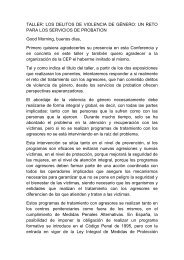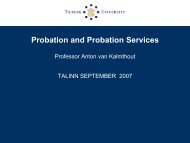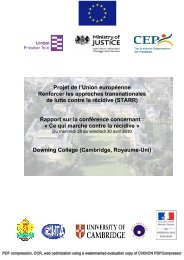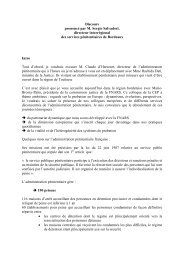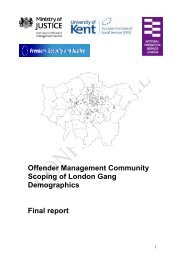Monitoring Hate Crime - CEP, the European Organisation for ...
Monitoring Hate Crime - CEP, the European Organisation for ...
Monitoring Hate Crime - CEP, the European Organisation for ...
Create successful ePaper yourself
Turn your PDF publications into a flip-book with our unique Google optimized e-Paper software.
81% of <strong>the</strong> offenders were autochthones, 16% not Western allochthones and 3% Western<br />
allochthones. 10% of <strong>the</strong> offenders were women. 55% of <strong>the</strong> offenders were between 18 and<br />
35 years of age. With growing age <strong>the</strong> number of discriminatory offences decreased. 22<br />
The finding that offenders discriminating <strong>for</strong> reasons of anti-Semitism are relatively very<br />
young is striking: 68% of <strong>the</strong>se offenders were 12-25 years of age, more than half of <strong>the</strong>m<br />
belonging to <strong>the</strong> age group of those 12-17 years of age. 23<br />
Ano<strong>the</strong>r interesting research question was, in how far <strong>the</strong> offenders are acting from<br />
conviction.<br />
Little more aggressive offenders were acting without conviction than from conviction (30%<br />
versus 26%).<br />
Those acting without conviction primarily are committing verbal discrimination. Offenders<br />
acting from conviction relatively often are committing daub.<br />
Offenders discriminating from conviction are using less alcoholics, relatively seldom (4%)<br />
drugs and more often no psychotropic substances (71%) than <strong>the</strong> offenders who do not act<br />
from conviction (49%). 24<br />
Looking at <strong>the</strong> sentencing practice fines and task penalties (community service orders) are <strong>the</strong><br />
most frequently used sanctions. Of <strong>the</strong> 948 cases 41,8 % ended with a fine and 25,4% with a<br />
task penalty. If discriminative offences were combined with aggression or serious aggression<br />
(offences with threat of life) <strong>the</strong> offenders were in most cases sentenced to prison sentences:<br />
in 1,7% of <strong>the</strong> 948 settled cases to a sentence of 6 months or less and in 6,5% of all settled<br />
cases to a sentence of more than 6 months. 25<br />
In 70% of cases of specific discrimination <strong>the</strong> prosecution was founded only on <strong>the</strong><br />
discriminatory offence.<br />
The results generally show that specific criminal discrimination as far as it came to <strong>the</strong><br />
attention of <strong>the</strong> Public Prosecution Service is likely to be nei<strong>the</strong>r in quantity nor in quality<br />
very serious. However, what we know until now is only a little part of reality. Perhaps <strong>for</strong> this<br />
reason most research findings arouse our curiosity.<br />
3.4.3 Some results from <strong>the</strong> study on common criminal discrimination<br />
22 Ch. Brants, R. Kool, A. Rignalda, Strafbare discriminatie, WODC 2007, p. 304.<br />
23 Ch. Brants, R. Kool, A. Rignalda, Strafbare discriminatie, WODC 2007, p. 305.<br />
24 Ch. Brants, R. Kool, A. Rignalda, Strafbare discriminatie, WODC 2007, p. 306.<br />
25 Ch. Brants, R. Kool, A. Rignalda, Strafbare discriminatie, WODC 2007, p. 274.<br />
8




![AGIS2 Nov 08 Conference Report_[Version 2] - CEP, the European ...](https://img.yumpu.com/50764570/1/190x245/agis2-nov-08-conference-report-version-2-cep-the-european-.jpg?quality=85)

